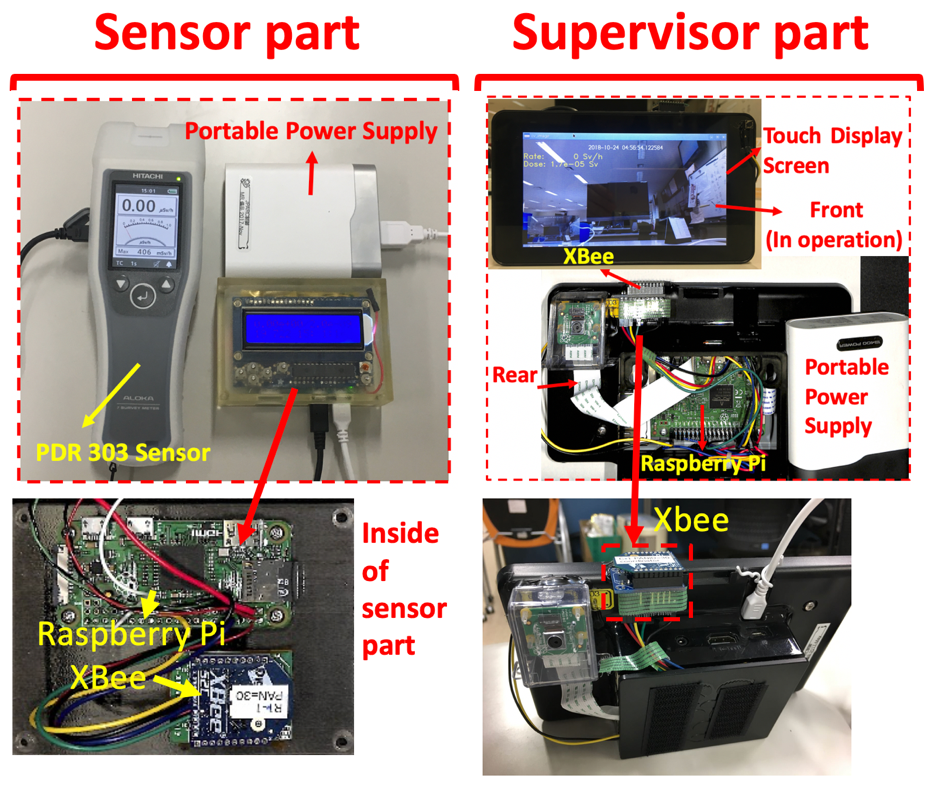March 05, 2020
Development of real-time radiation dose monitor system and Study of FAIR accelerator timing system
SOKENDAI Student Dispatch Program program year: 2019
MIN Yang, Accelerator Science
Brief description
The research consists of two parts: A) development of real-time dose monitor system, and B) study of FAIR accelerator timing system. The former was presented in a short oral session in the EPICS (Experimental Physics and Industrial Control System) collaboration meeting, held in ITER (the International Thermonuclear Experimental Reactor) institute in France. EPICS is a toolkit developed for large accelerators, but now it has been introduced to non-accelerated fields like nuclear fusion (i.e. ITER).
A) J-PARC (Japan Proton Accelerator Research Complex) is an organization consists of high-intensity proton accelerators and experimental facilities located in Ibaraki, Japan. In general, accelerator workers sometimes must work in high residual radiation environment. In J-PARC, the existing radiation dose monitor system is not real time. It calculates and shows the total dose of individual worker during his/her work, when the worker leaves a radiation-controlled area. Take this problem into account, I have developed a new radiation dose monitor system. It can collect dose of a worker in real-time, and display it on a touch display screen when a worker is still in a radiation-controlled area. As in the Figure, the system uses tiny computers (Raspberry Pi) and wireless communication modules (XBee) to collect dose data remotely. Raspberry Pi is small, but various EPICS tools, developed for large accelerators, can be used. XBee is chosen because of its low-power feature, which is essential not to interfere dose meter measurements. Both Raspberry Pi and XBee modules are low-cost, very small and low power, which are important for our radiation dose monitor system.

This system includes two parts, a sensor part and a supervisor part. A sensor part consists of a radiation dose meter and a tiny computer (Raspberry Pi), which is carried by a radiation worker. A supervisor part consists of a tiny computer (Raspberry Pi) and a touch display screen, which can monitor radiation doses of the worker remotely in real-time. These two parts communicate wirelessly using wireless communication modules (XBee).
B) GSI (Helmholtz Centre for Heavy Ion Research) is a research institute for nuclear physics using accelerated heavy ions, located in Germany. FAIR (Facility for Antiproton and Ion Research) is an accelerator facility under construction in GSI. The functions of FAIR and J-PARC timing systems are similar: provide thousands of trigger and RF signals to physically distributed components over several kilometers, to guarantee synchronous actions of all the components. To study more about accelerator timing system, I visited GSI to study FAIR timing system. Compared to J-PARC timing system, FAIR timing system uses new technology: so-called "White Rabbit". It based on customized high-speed network switches with GPS (Global Positioning System) and FPGA (Field Programmable Gate Array). While J-PARC timing system has used analog and FPGA combined technology. Learning FAIR timing system is helpful not only to understand accelerator timing systems in general, but also to improve our J-PARC timing system in the future.
Place and period of visit
EPICS collaboration meeting 2019, ITER, France, 2019. 6.3 - 2019.6.8
GSI, Germany, 2019.6.8 - 2019.6.15
Learned and achieved
A) I made a presentation about real-time radiation dose monitor system, communicated with other EPICS users and changed ideas with them. I learned many examples and how EPICS tools are used in various accelerators. I also learned the advantages of EPICS 7 and tried to use it during the workshop.
B) At GSI, I learned FAIR timing system and visited GSI facilities which made me know much about accelerator operation and timing system.
Presentation title and abstract of EPICS meeting
Title: Real-Time Radiation Dose Monitor System
Abstract: The real-time radiation dose monitor system is based on EPICS, and the system hardware is mainly composed of Raspberry Pi and XBee wireless communication module. The system designed the monitor function which can transfer the radiation dose value from dose meter to local PC wirelessly in a distance.
High Energy Accelerator Science, Accelerator Science, Min YANG
